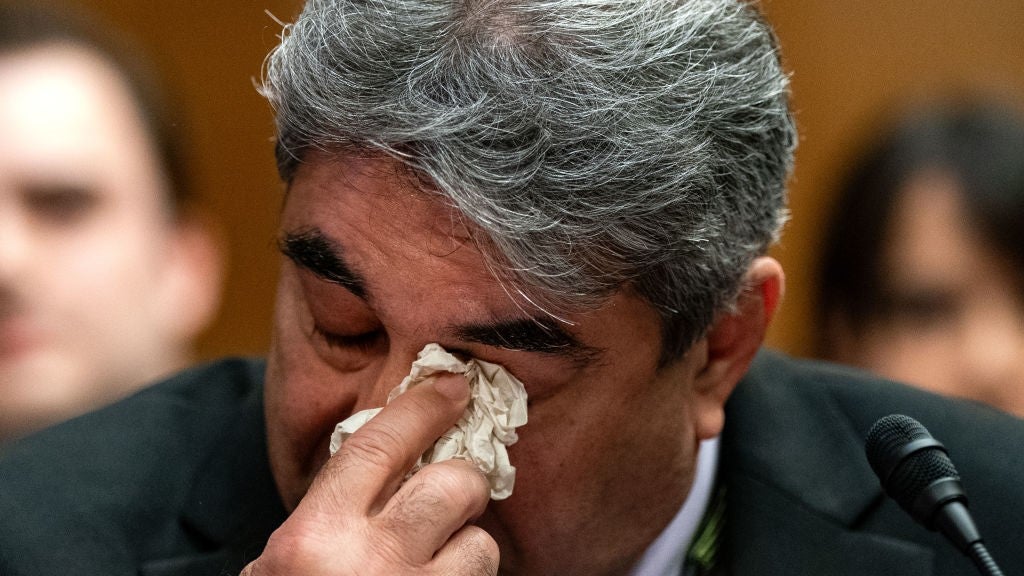
Actions speak louder than words, but words do a pretty good job when they are listened to. So allow me to deliver a list of expectations for the future of aviation.
First, we need to implement an agenda for aviation. And once we have made aviation an efficient mode of transport, we can address the need to develop an integrated transport policy as a whole by promoting inter-modality and exploiting the advantages each mode of transport has to offer, to the benefit of European consumers and European competitiveness.
Second, the approach of EC Commissioner Jacques Barrot to seek consultation with the stakeholders should become a fundamental European principle. Balancing the policies of sovereign states with ceding elements of their sovereignty to an overarching entity is a difficult task. It can only be achieved by institutionalising the dialogue between EU member states and the European Commission.
However, the substance of regulation measures can best be evaluated by the aviation industry itself. The trialogue between member states, industry and EU institutions is fundamental to assessing, for example, how to achieve a level playing field for the airline-airport relationship in Europe.
The trialogue is also of crucial importance in developing a sensible external relations policy that brings added value to the European aviation sector, without undermining the negotiating clout of either the EU Commission or the EU member states.
See Also:
INTERNATIONAL PICTURE
How well do you really know your competitors?
Access the most comprehensive Company Profiles on the market, powered by GlobalData. Save hours of research. Gain competitive edge.

Thank you!
Your download email will arrive shortly
Not ready to buy yet? Download a free sample
We are confident about the unique quality of our Company Profiles. However, we want you to make the most beneficial decision for your business, so we offer a free sample that you can download by submitting the below form
By GlobalDataThis leads me to my third expectation. The European regulator should not seek to impose European policies on non-EU countries. In Europe, the trialogue will, ideally, maintain the balance between European integration and the sovereignty of individual governments. But such a mechanism does not apply internationally.
For example, the foiled terrorist plot at UK airports in August 2006 gave rise to an understandable debate on measures to meet the new risks being faced. In Europe, it is in our interests to implement one standard to avoid confusion. But internationally, one standard cannot be imposed. We should avoid extra-territorial implementation of either EU or US measures, and instead require bilateral agreement between the EU and non-EU countries that their separate standards are compatible and justify a one-stop security policy.
A second example relates to the environment. The aviation sector in Europe is proud of its achievements in reducing fuel consumption and decoupling additional capacity from increased fuel consumption. That said, an environmental debate is necessary to secure the mid- to long-term competitiveness of European airlines.
However, the environmental debate should not be used to impose taxes or introduce an emissions trading scheme (ETS) on European airlines alone, and European regulators should not delude themselves that they can impose an ETS globally. Any European proposal to resolve a global environmental problem should be agreed upon globally.
REGULATORY LANDSCAPE
Having outlined the core principles for regulating aviation in Europe in the years to come, we must turn to the regulatory landscape required for such principles to work.
The current regulatory structure is created by a mixed bag of national, international, pan-European and EU authorities. But is the current landscape of regulatory bodies efficient and able to deliver what the European industry requires? AEA believes the answer to this question is no. The mix of regulatory authorities seems to reflect ‘the good old days’ when the EU was just a long-term vision and the aviation market completely fragmented.
So what would constitute an efficient regulatory landscape for Europe? First of all, it would be one that functions at the lowest possible cost. Regulatory authorities tend to follow internal constraints, but these often translate into cost increases for users.
EASA is currently underfunded. This is understandable on one level because, from the first day of its existence, EASA’s fee and charge structure was based on hypotheses, and there were no valid benchmarks. But this underfunding will not be remedied by increasing fees and charges for airlines and, thereby, increasing their costs.
A further problem with the regulatory landscape is that Eurocontrol is an inter-governmental body, the services of which are not subjected to strict cost containment.
Of course, efficiency is about more than cost control. Efficiency is a function of the lowest cost combined with the greatest benefit. For airlines, ‘the greatest benefit’ is getting their aircraft from the departure gate to the arrival gate in the quickest manner possible and on the straightest trajectory at the lowest cost, without jeopardising safety or comfort. In other words, airspace users operating a flight in the single European market expect services that facilitate the operation of their flights.
There is another feature that underpins the notion of efficiency: regulatory bodies are at their most efficient when they are embedded in an EU framework. It does not make sense to create a single European market if that market is governed by a plurality of different regulatory bodies working in parallel. In an ideal world, a single market would have a single authority, which, if necessary, could call on the services of specialised and national agencies.
The SESAR project is a significant step in the right direction. SESAR’s first step was to achieve a ‘buy-in’ from all stakeholders. This has led to a mutually shared new attitude and approach from all concerned. Stakeholders feel that they have influence, and are convinced that this is the right way forward, because developments are being modelled that they hope will bring added value, improve efficiency and eliminate unnecessary costs of €3bn.
However, if SESAR is to remain operational until 2020, its structures may have to be modified. Again, the structures of SESAR rely on the inefficient structures of the current regulatory landscape.
IMPROVING THE FRAMEWORK
Finally, let us turn to the consequences of the EU framework. The currently fudged responsibilities of the individual EU agencies need to be clarified. We currently have an array of different agencies.
The airline sector needs one European safety agency with responsibility for safety on the ground and in the air. And we need a body with coordinating functions, which many years ago were allocated to Eurocontrol, but seem to be somewhat fudged now.
The problem with Eurocontrol is not its level of expertise, which is undeniable. The question is whether this body of highly respected air traffic management experts can and should deal with issues related to European air traffic management. The AEA believes it should not.
An EU framework requires a clear decision on the role of national regulators. This is easier said than done, given the structure of the EU as a single market for 25 national sovereign states. Our main concern is that if we do not all see European integration as a process, we undermine the efficiency of its regulatory authorities. But if the member states, EU institutions and industry agree on an EU framework, then we have added value to the EU for European citizens.
Providing the right framework for the global competitiveness of the European aviation sector is not an easy job, but someone has to do it. We trust it will be done with skill, sensitivity and efficiency. AEA is committed to assisting both European and national regulators whenever and wherever it can.




